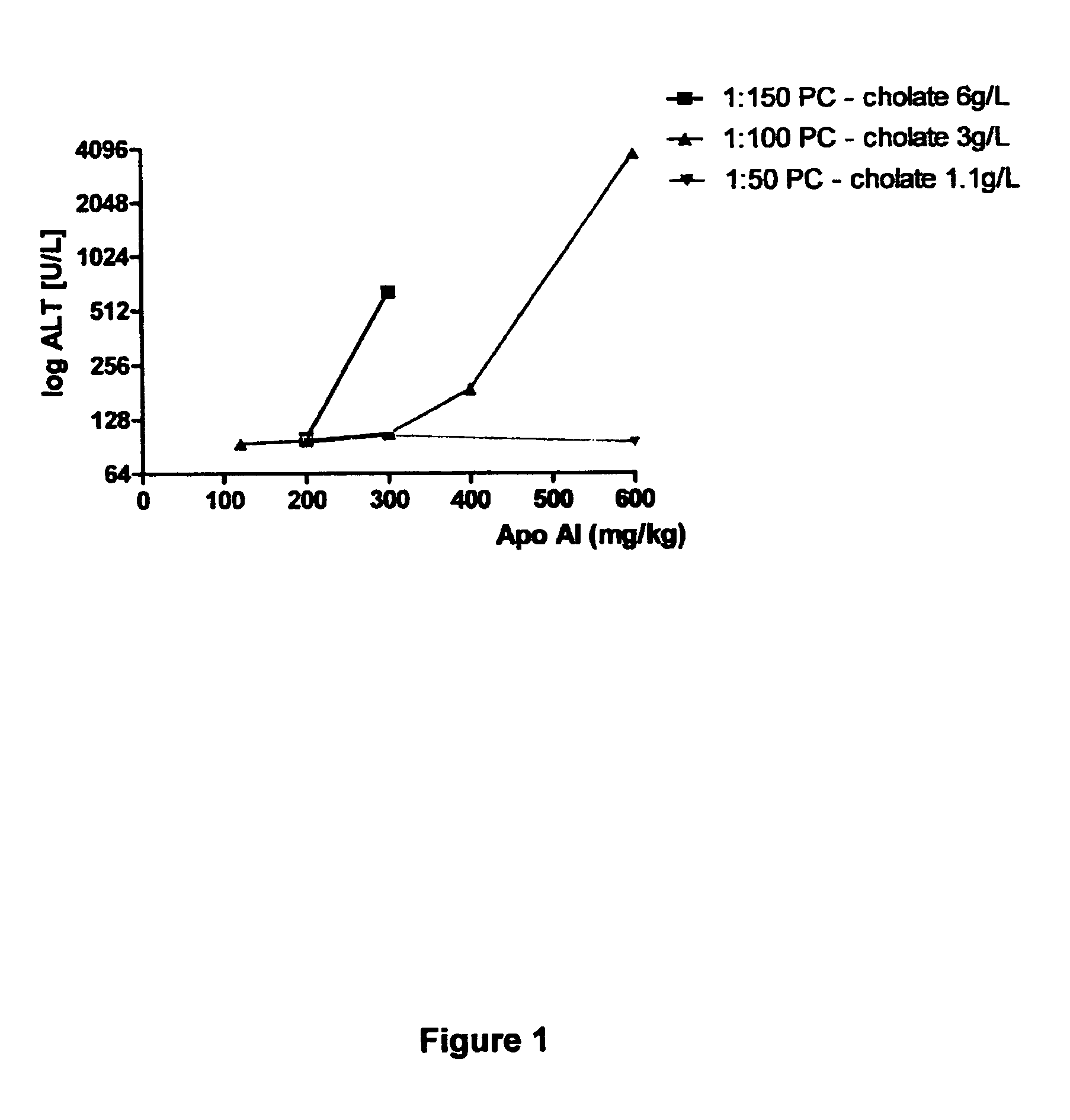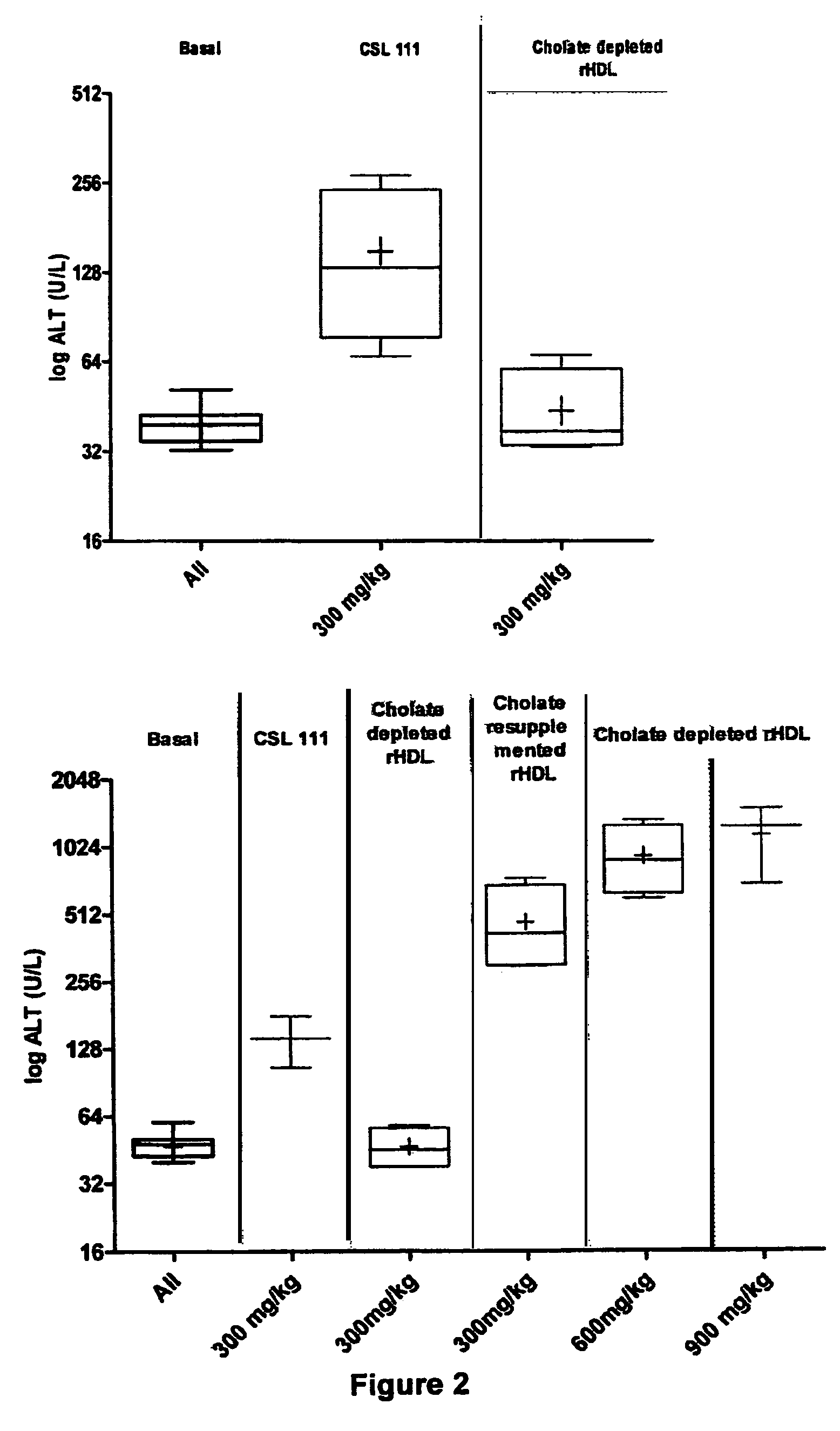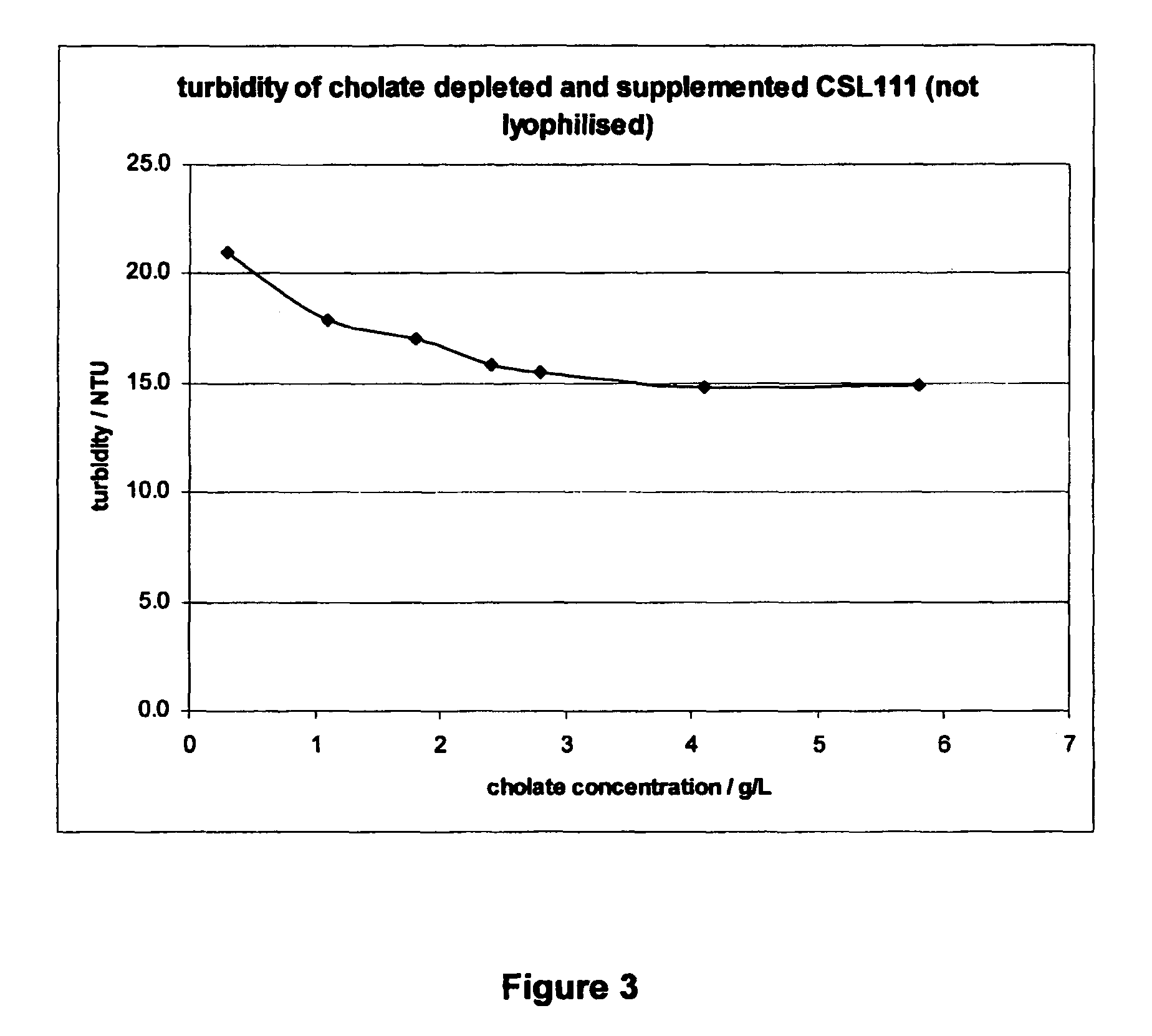Reconstituted high density lipoprotein formulation and production method thereof
a high-density lipoprotein and formulation technology, applied in the field of reconstituted high-density lipoprotein formulations, can solve problems such as liver toxicity, and achieve the effect of avoiding one or more deficiencies or reducing the number o
- Summary
- Abstract
- Description
- Claims
- Application Information
AI Technical Summary
Benefits of technology
Problems solved by technology
Method used
Image
Examples
example 1
Liver Toxicity Study Comparing Different Apo-A1:PC Ratios and the Effect of Controlling Cholate Levels
[0080]The level of liver toxicity as measured by ALT activity was determined in the rat model (see details of model below in Example 2) for HDL preparations containing different Apo AI:PC ratio's (1:150, 1:100 & 1:50). Each HDL preparation contained different cholate concentrations with levels ranging from 6 g / L for 1:150 to 1.1 g / L for the 1:50 preparation.
[0081]The results indicated that increased ALT levels were observed for the 1:150 HDL preparation for doses from 300 mg / kg. The 1:100 HDL preparation caused increased ALT levels at dosages from 400 mg / kg, with levels increasing considerably at 600 mg / kg. In contrast an increase in ALT activity was not observed for the 1:50 HDL preparation up to a 600 mg / kg dose (FIG. 1). These results suggest the liver toxicity is reduced by either the level of PC and / or the level of cholate in the HDL preparation. To investigate whether the leve...
example 2
Liver Toxicity Study Comparing Graded Cholate Levels and Apo-A1:PC Ratios
Introduction
[0082]The goal of this study was to determine the hepatotoxicity of reconstituted HDL formulations (rHDL) with graded cholate concentrations and Apo A-I to PC ratios as follows rHDL PC 1:150 (3 g / L Cholate), rHDL PC 1:100 (1 g / L Cholate), rHDL PC 1:50 (3 g / L Cholate), rHDL PC 1:50 (0.2 g / L Cholate). The conscious rat model was used to determine the effect of the aforementioned formulations on liver function. Hepatotoxicity was evaluated by determination of liver enzyme activity (ALT and AST) in serum.
[0083]Apo-A1 is considered to be the active component of the formulations and plasma levels of Apo-A1 are the key indicator of exposure.
Materials and Methods
Administration of Test rHDL Formulations
Test rHDL Formulation 1
Substance / INN: rHDL PC 1:150 (3 g / L Cholate)
Manufacturer: CSL Behring AG, Bern, Switzerland
Lot number: Q.3
Dose: 600 mg / kg b.w.
Route: iv. infusion via tail vein
Frequency: infusion t=0-60 ...
example 3
Stability Trials Comparing Cholate Levels in rHDL Formulations
[0099]An embodiment of an rHDL formulation of the invention displays significantly reduced liver toxicity compared to prior art rHDL formulation CSL111, while maintaining a biological activity at least equivalent to CSL111. This rHDL formulation distinguishes from CSL111 by a lower protein to PC ratio, a lower level of cholate, a higher protein content and a reduced sucrose concentration.
Formulation of Reconstituted HDL
Starting Material Apo-AI
[0100]As starting material a purified and pasteurized Apo-AI solution was used. The batch size was either 30 g or 35 g protein.
Lipid Solution
[0101]The formula for manufacture of the lipid solution is given below. First, the buffer solution containing 10 mM Tris, 10 mM NaCl and 1 mM EDTA was made. The required amount was calculated according to equation 1:
[0102]amountofbuffersolution[g]=amountofprotein[g]·1000·0.025·ratio150equation1
Next, sodium cholate (1.3 mol / mol lipi...
PUM
| Property | Measurement | Unit |
|---|---|---|
| size | aaaaa | aaaaa |
| concentration | aaaaa | aaaaa |
| concentration | aaaaa | aaaaa |
Abstract
Description
Claims
Application Information
 Login to View More
Login to View More - R&D
- Intellectual Property
- Life Sciences
- Materials
- Tech Scout
- Unparalleled Data Quality
- Higher Quality Content
- 60% Fewer Hallucinations
Browse by: Latest US Patents, China's latest patents, Technical Efficacy Thesaurus, Application Domain, Technology Topic, Popular Technical Reports.
© 2025 PatSnap. All rights reserved.Legal|Privacy policy|Modern Slavery Act Transparency Statement|Sitemap|About US| Contact US: help@patsnap.com



